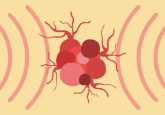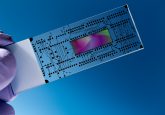Point-of-use detection of amphetamine-type stimulants with organic field-effect transistors: the drug sensor of the future?

Abuse of drugs such as amphetamine-type stimulants (ATS) is an increasing global concern, and while several methods have been developed to detect their use, including GC–MS, LC–MS, immunoassays and molecularly imprinted polymer SPE, there remains a large demand for the development of fast, easy and cost-effective drug detection methods.
In their proof-of-concept design, published in Chem, Yoonjung Jang and colleagues developed a point-of-use, portable, wireless drug sensor with high sensitivity toward ATS (among amperometric sensors) by combining the selectivity of supramolecular chemistry and the sensitivity of organic field-effect transistors (OFETs). The work provides a viable and new variation of a drug-detection method, for the fabrication of highly sensitive and selective drug sensors.
The fabricated amperometric sensors exhibited unprecedented sensitivity toward ATS, with a detection limit of nanomolar concentrations in urine and picomolar concentrations in water or a physiologic buffer. The strategy was further demonstrated through the preparation of a portable and miniaturized sensor with a wireless communication system.
This sensing system potentially offers a low-cost, simple and viable method for sensitive detection of trace amounts of ATS in urine and other samples at the point-of-use.
Sources: Yang Y, Jang M, Kim H et al. Point-of-Use Detection of Amphetamine-Type Stimulants with Host-Molecule-Functionalized Organic Transistors. Chem. https://doi.org/10.1016/j.chempr.2017.08.015 (Epub Ahead of Print) (2017); www.eurekalert.org/pub_releases/2017-09/cp-sut092017.php





